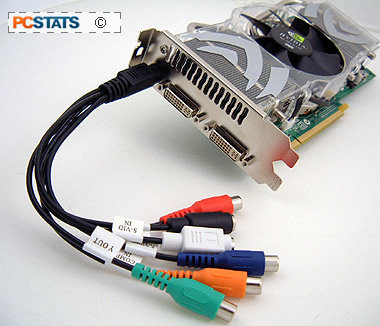High Definition content is the future of
entertainment; heck Sony is betting on HD massively by timing the release of the PlayStation 3
for 2006 when HD is set to fully explode into the lexicon
of techno-geeks! Playing High Definition content on current generation PCs can bog down the
fastest processors because there is more data to handle. Similar to the need for
DVD accelerators a few years back, nVIDIA PureVideo enables computer users to
view MPEG-2/DVD and WMV HD formats without slowing the PC to a crawl.
 The PureVideo standard incorporates a hardware accelerator for the afore
mentioned MPEG-2/DVD, and Microsoft Windows Media HD Video standards (WMV HD). According
to nVIDIA's documentation on PureVideo, the GPU (GeForce 6 and 7 series GPUs) takes on
video decoding tasks from the CPU, and the end result is
smoother, shutter free HD playback. nVIDIA PureVideo also supports most current and future high
definition formats. The system seems to be built with a good degree of future proofing
for upcoming standards - as it should be.
The PureVideo standard incorporates a hardware accelerator for the afore
mentioned MPEG-2/DVD, and Microsoft Windows Media HD Video standards (WMV HD). According
to nVIDIA's documentation on PureVideo, the GPU (GeForce 6 and 7 series GPUs) takes on
video decoding tasks from the CPU, and the end result is
smoother, shutter free HD playback. nVIDIA PureVideo also supports most current and future high
definition formats. The system seems to be built with a good degree of future proofing
for upcoming standards - as it should be.
PureVideo is more than just a media accelerator; it also includes features to
improve video picture quality. If you believe the marketing; DVD, cable, and
satellite video provide poor crispness, clearness and smoothness that consumers
are desperate to be "saved from." nVIDIA's PureVideo technology applies spatial
temporal de-interlacing to apparently deliver a better image than traditional
de-interlacing can muster. PureVideo also fixes the 3:2 pull down problem that
can arise from 24 fps video being converted to 30 fps for viewing on TVs or
monitors. By recovering the original 24 frame content, PureVideo apparently
allows for a clear crisper image.
PureVideo can also scale videos to any resolution, while maintaining a
relatively detailed picture. This means users can view lower resolution videos
at a high resolution without suffering too much from blocky or blurry
pictures.
To test PureVideo's HD accelerating capabilities, we decided to play one
video through Windows Media Player 10, which was downloaded from Microsoft's WMV HD Content Showcase. The Discoverers (IMAX)
video is available in both 720P and 1080P formats, and CPU utilization was
monitored through Task Manager to give a general indication of system load.

With the 720P version of the Discoverers video playing back, CPU usage immediately jumped to 100% but that fell within a second back to normal operating range. Throughout the video, CPU usage jumped between 25-35%.

With the 1080P version of the Discoverers video playing back CPU load hovered between 45-60%. While that sounds high, with a videocard that does not support HD acceleration, CPU usage stays stuck at 100% and the video quality is choppy.
Next up, overclocking the most expensive videocard from nVidia into an even faster state of Zen!
